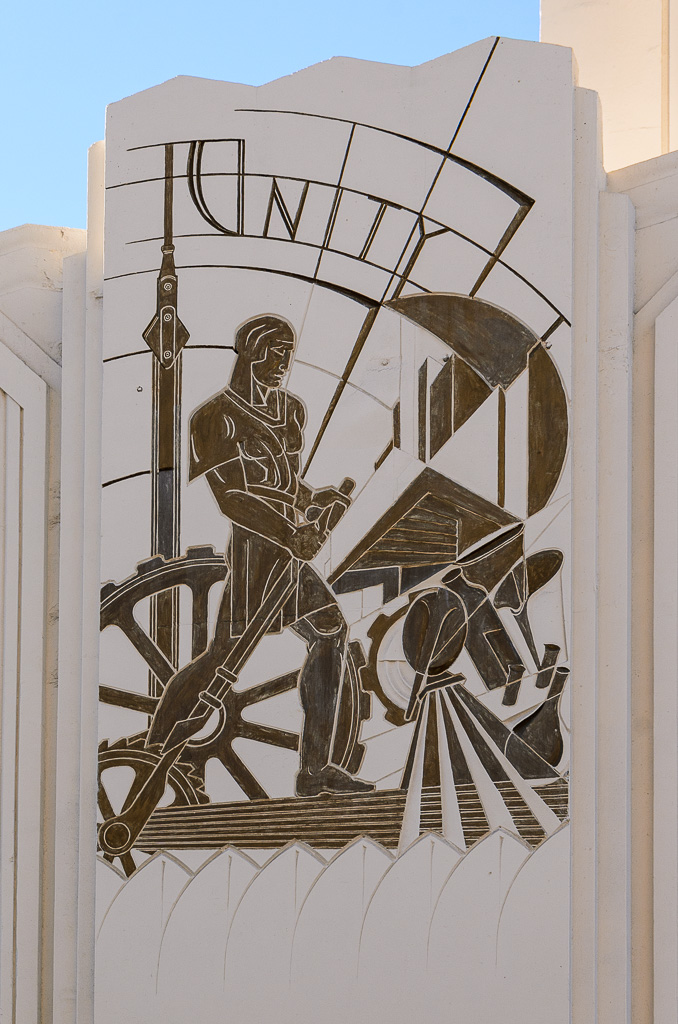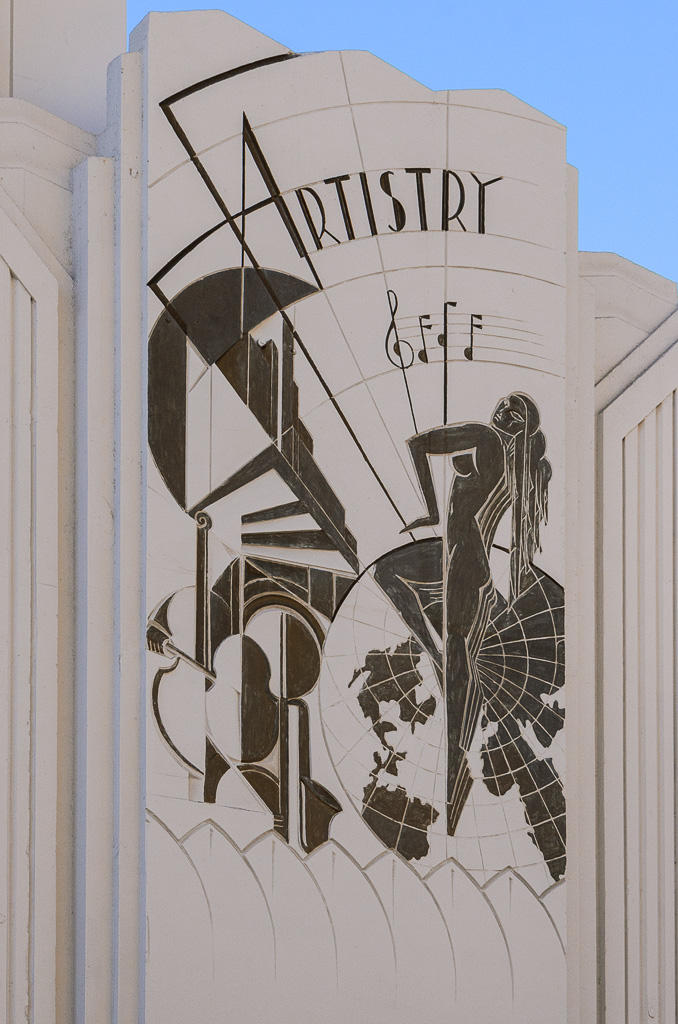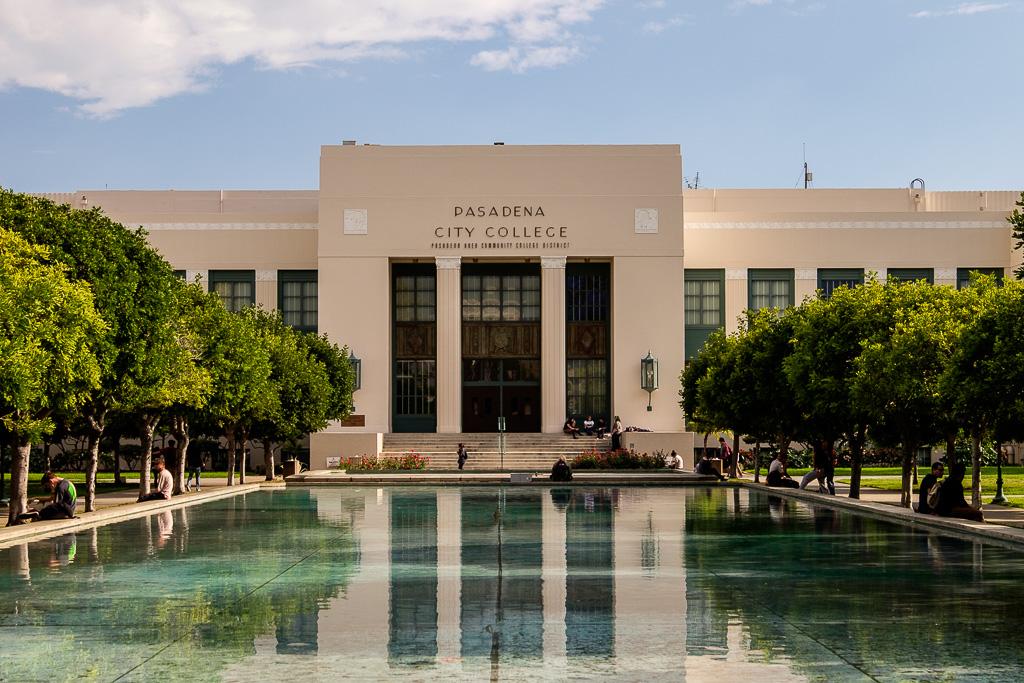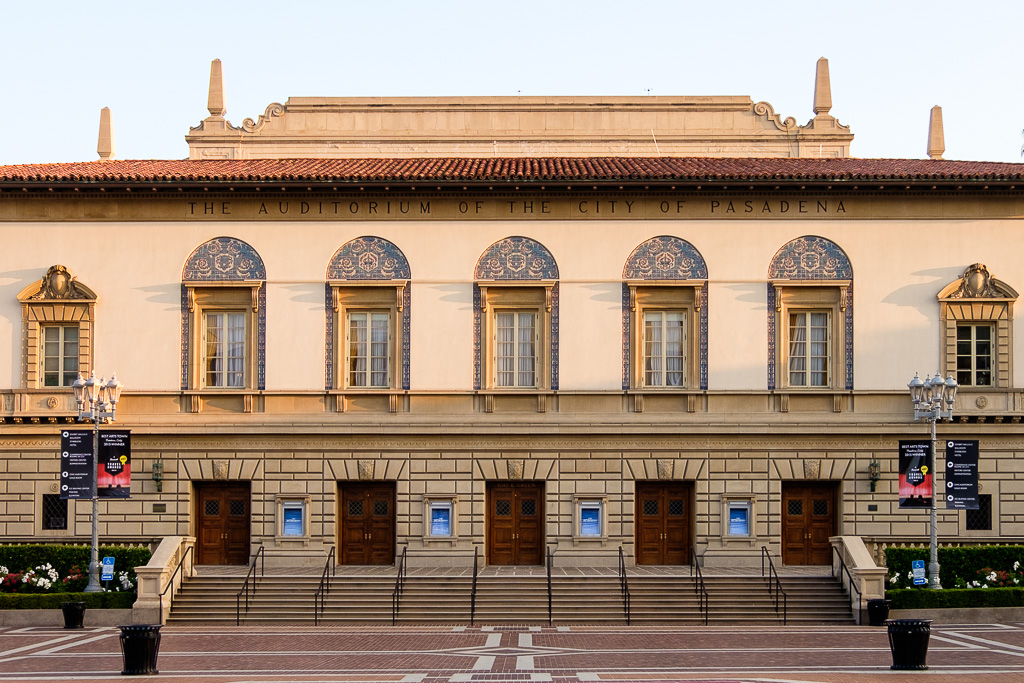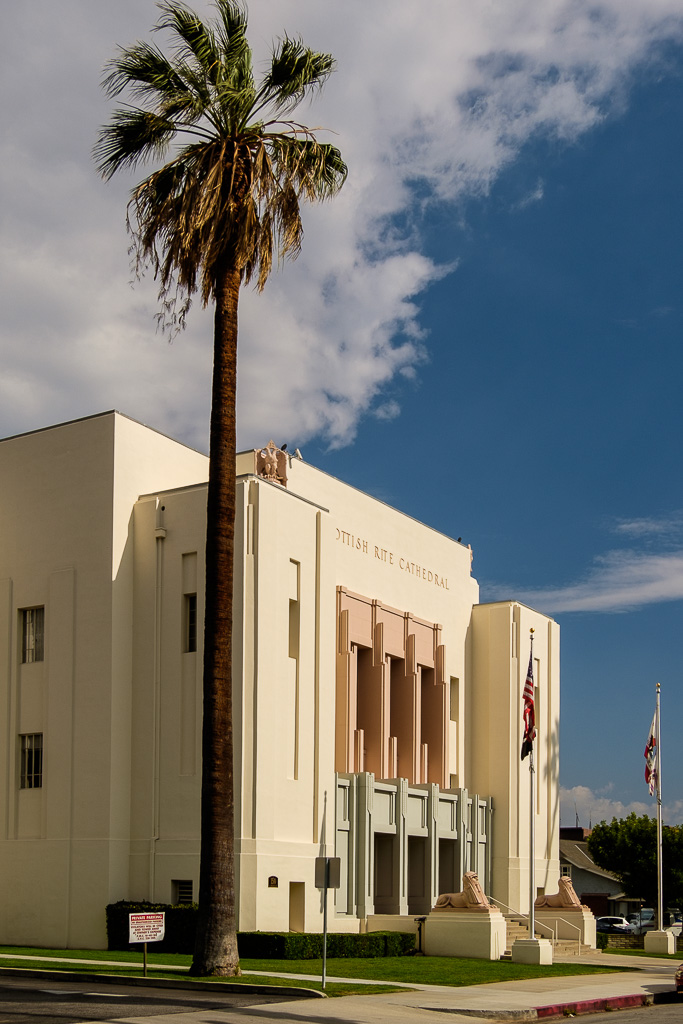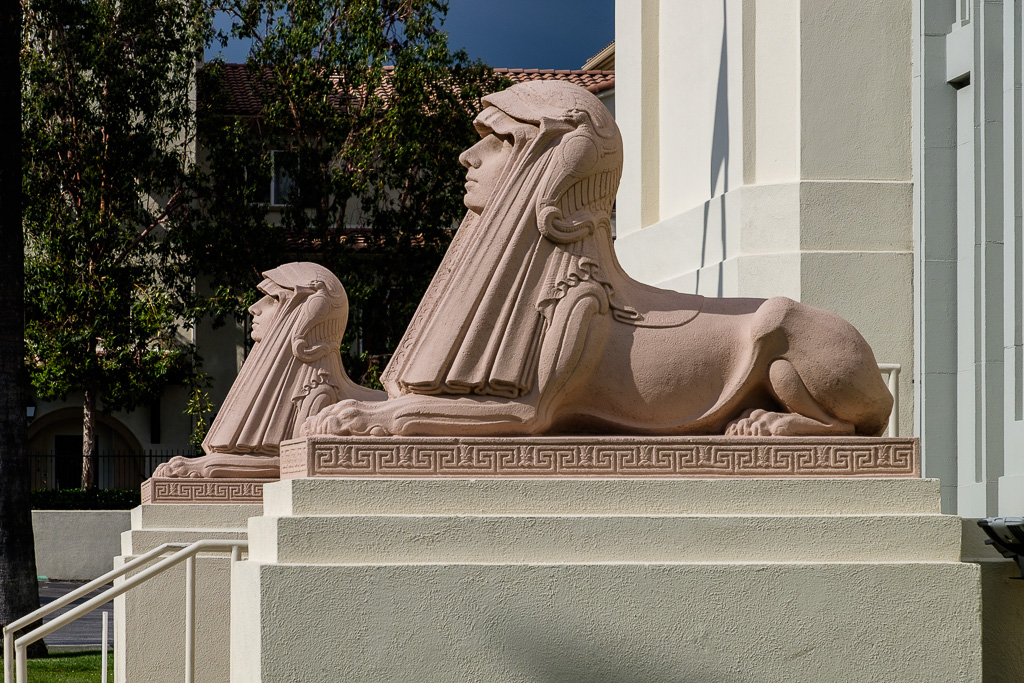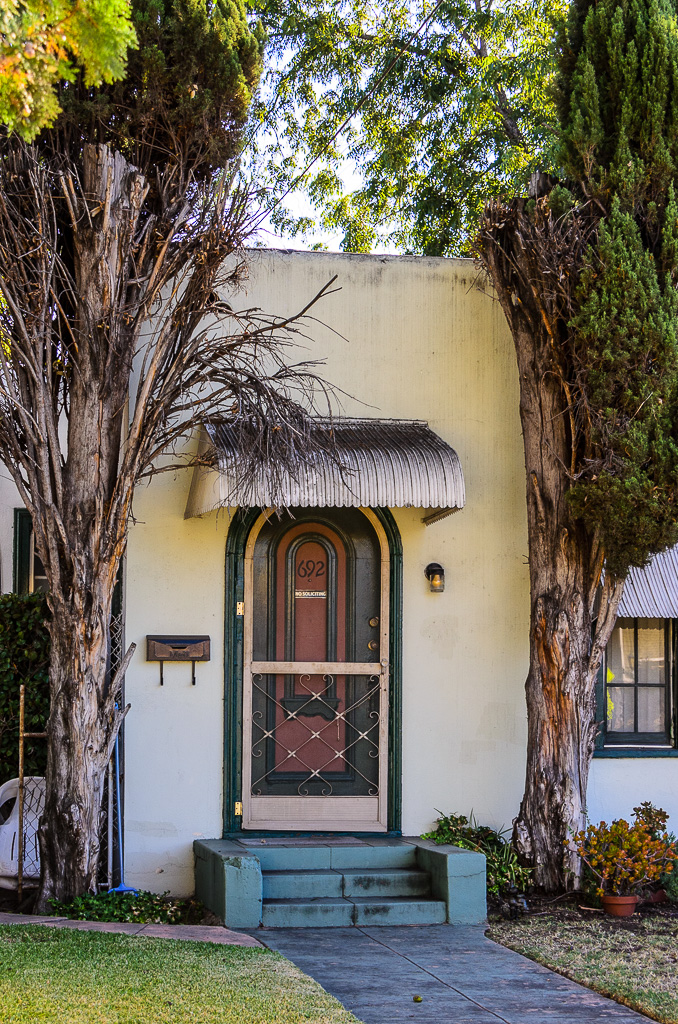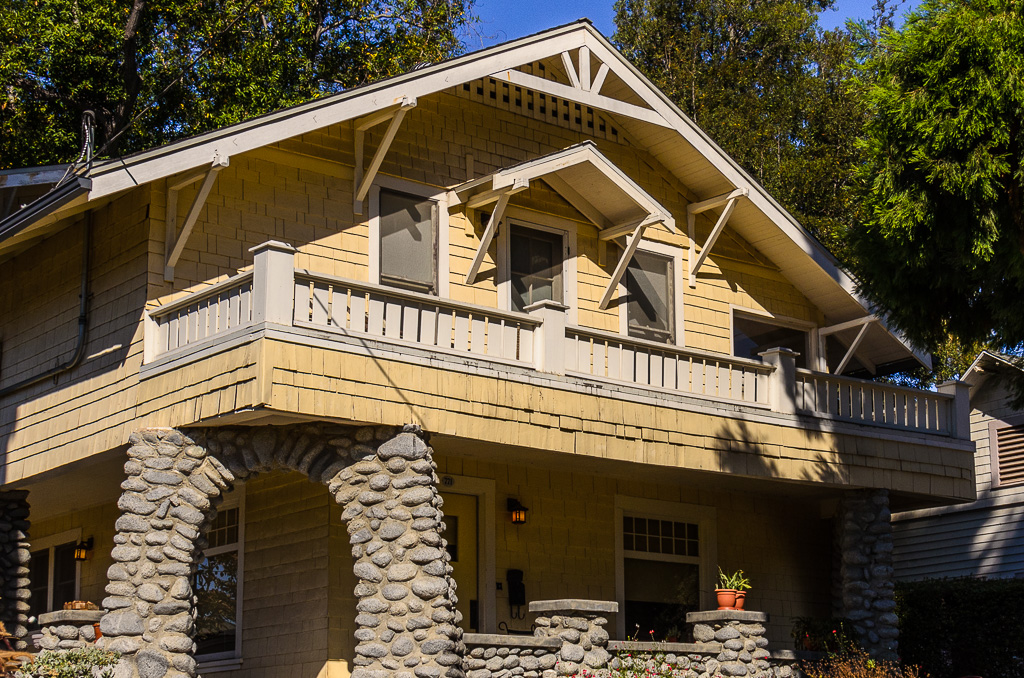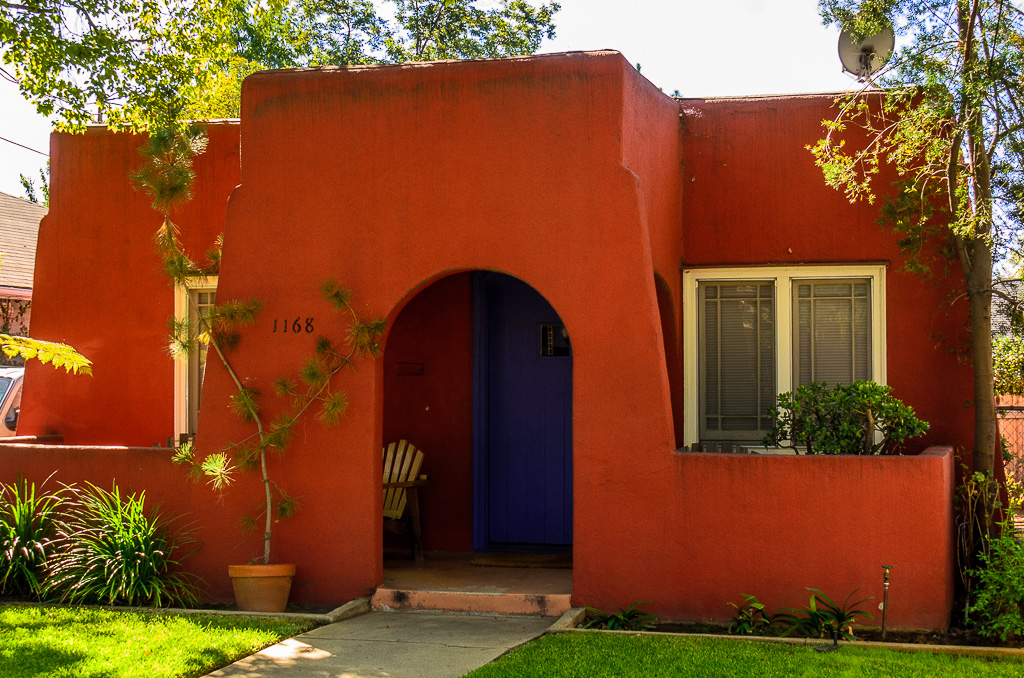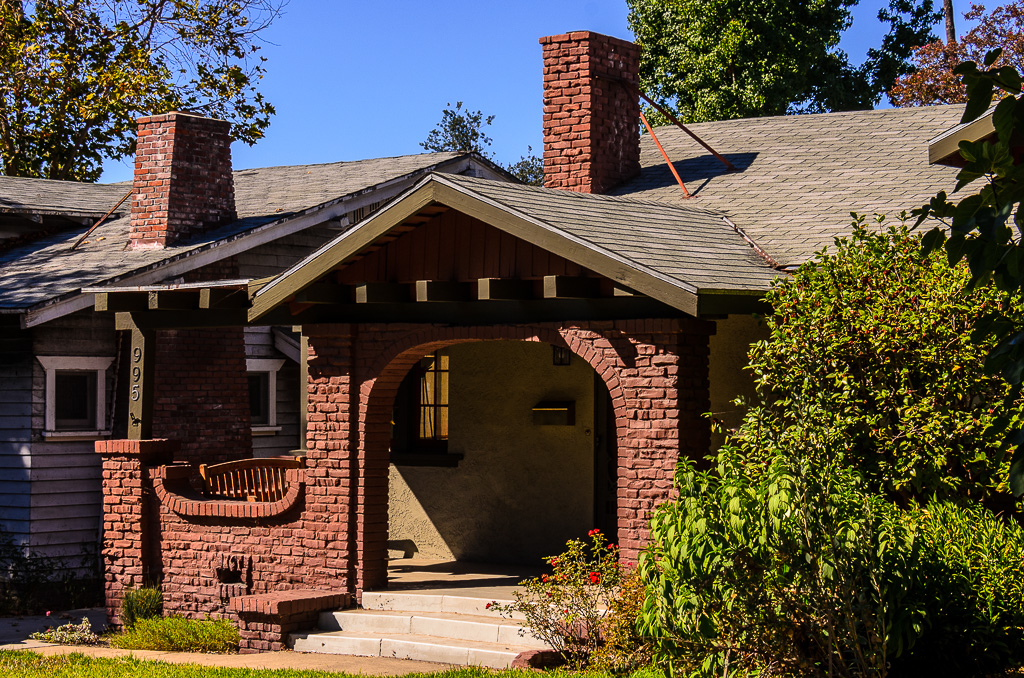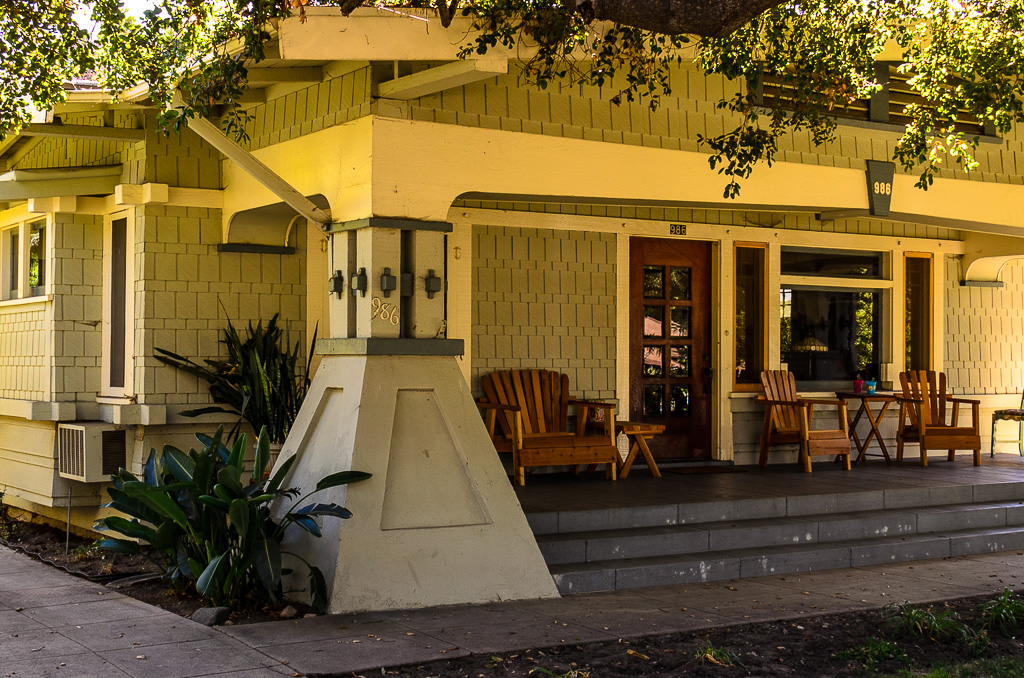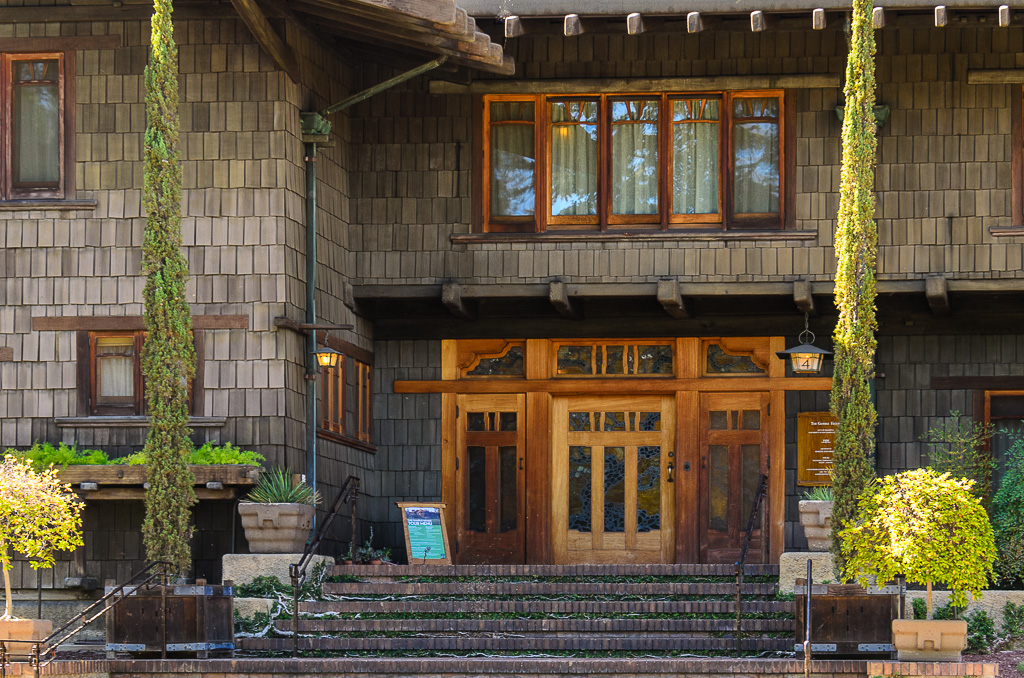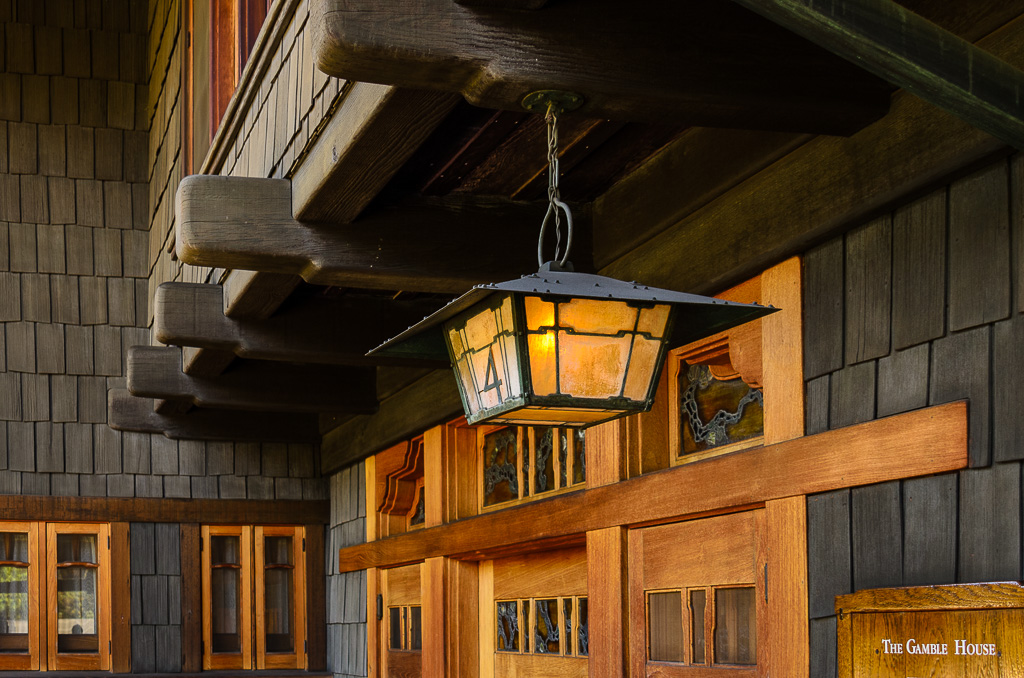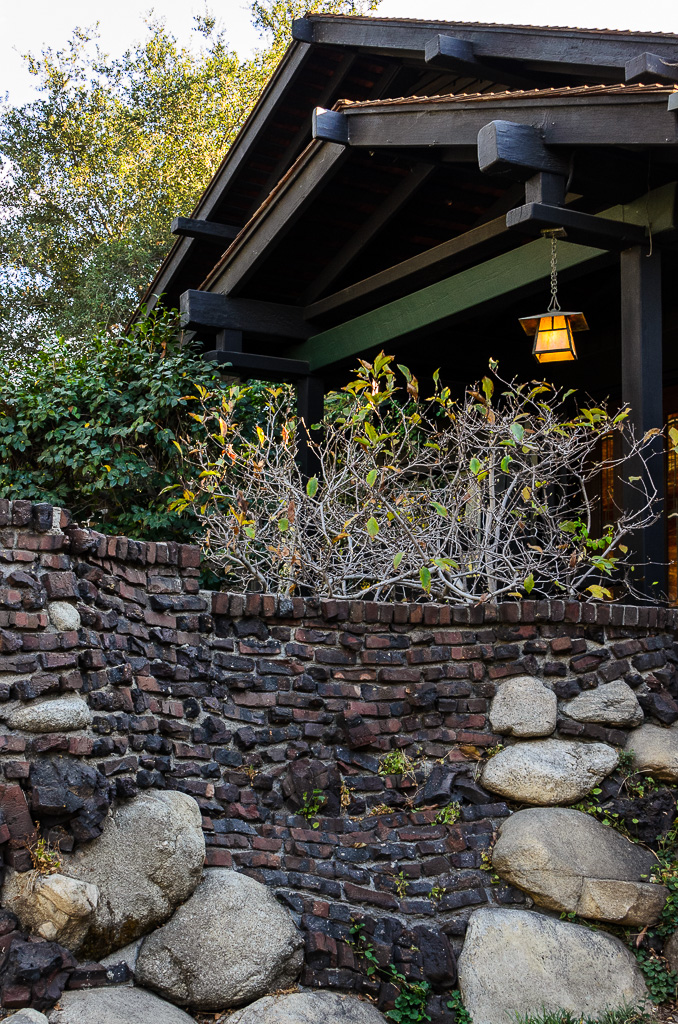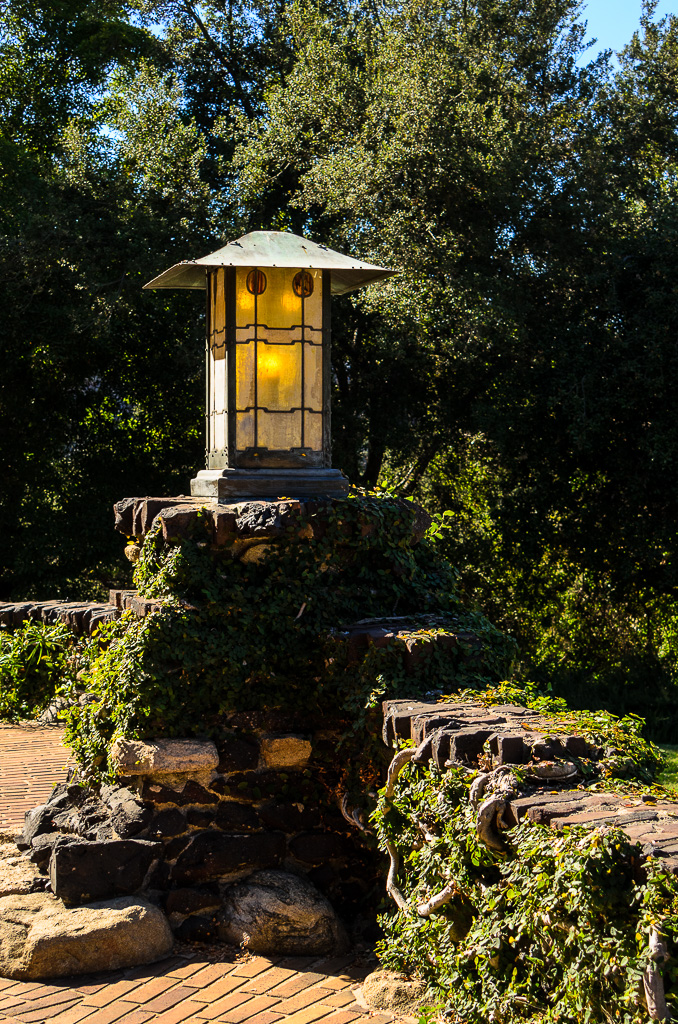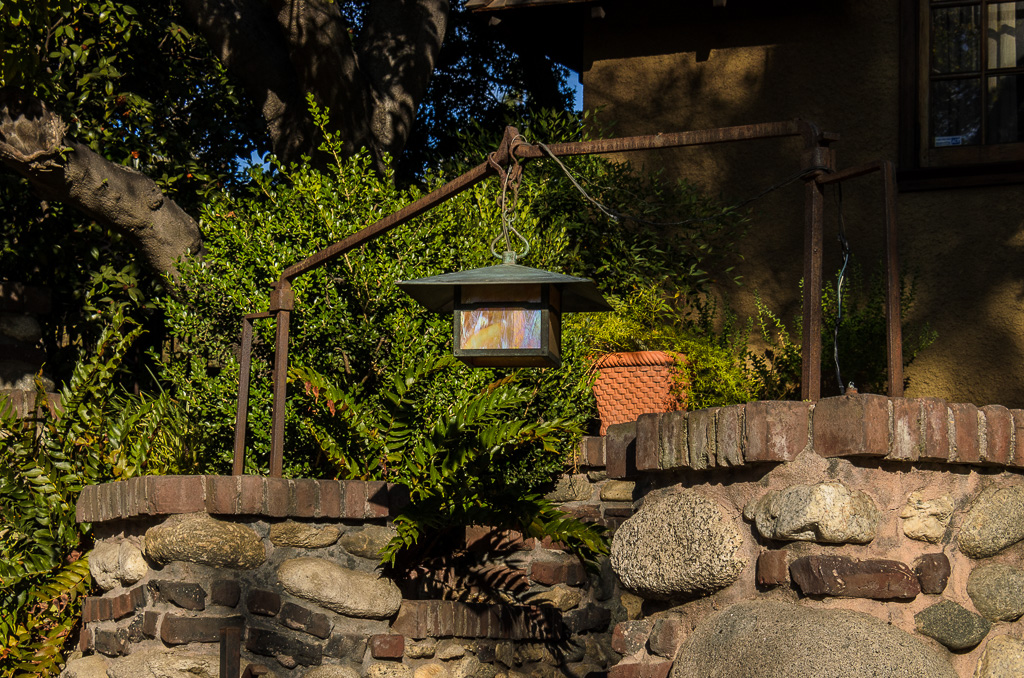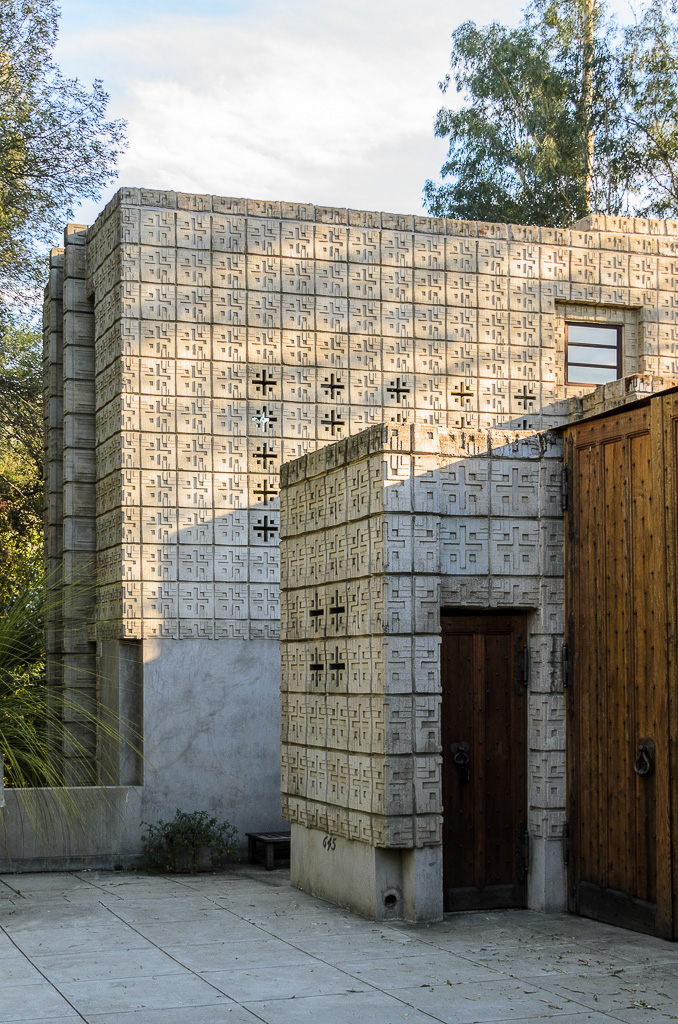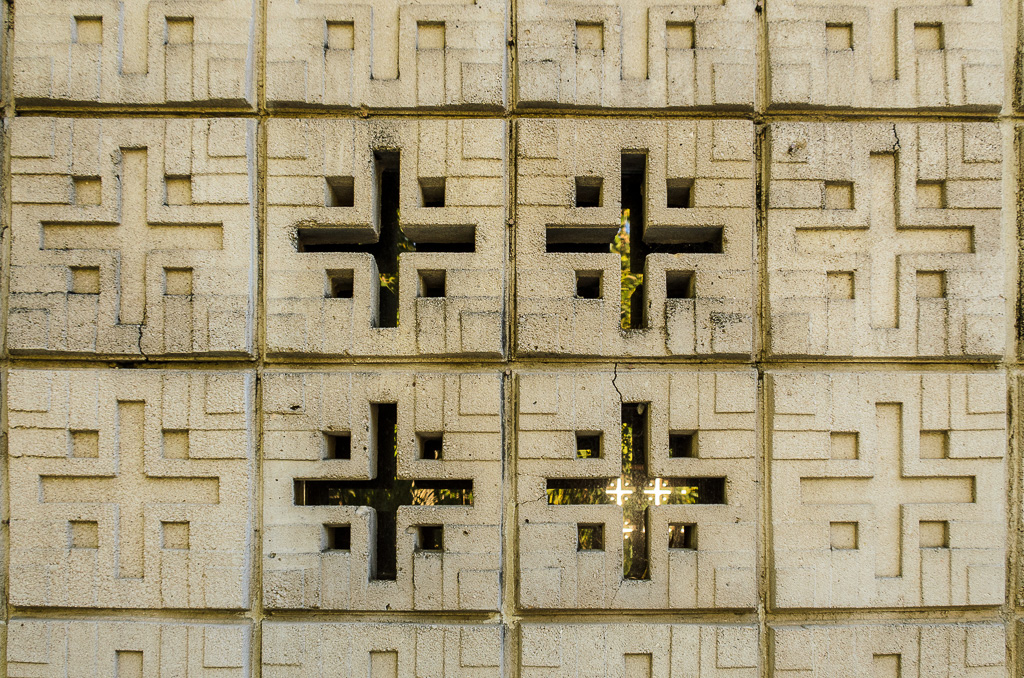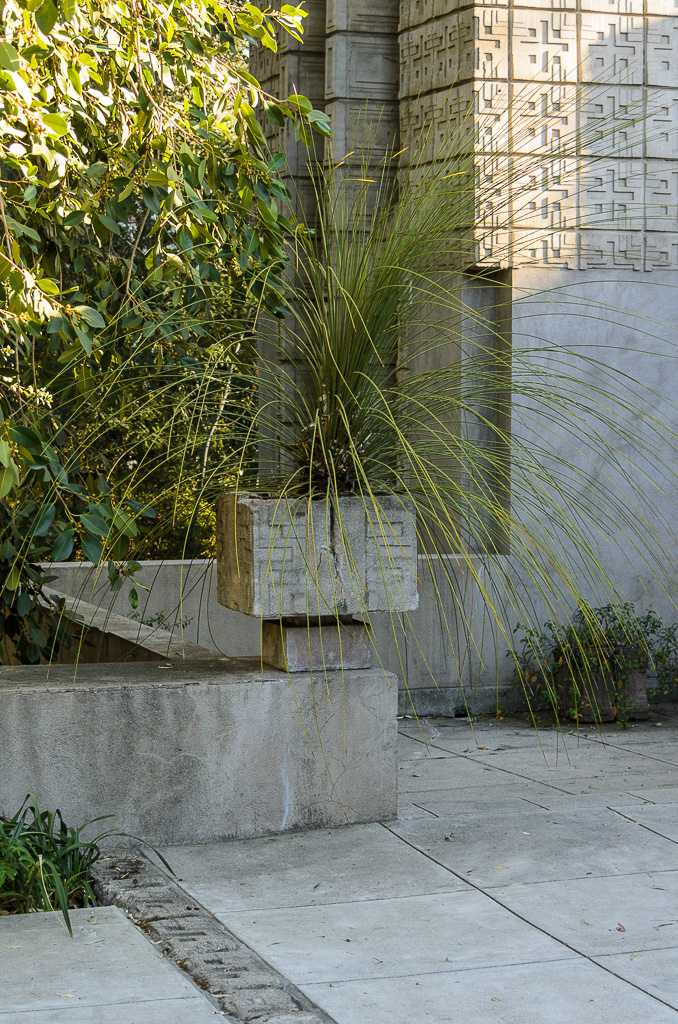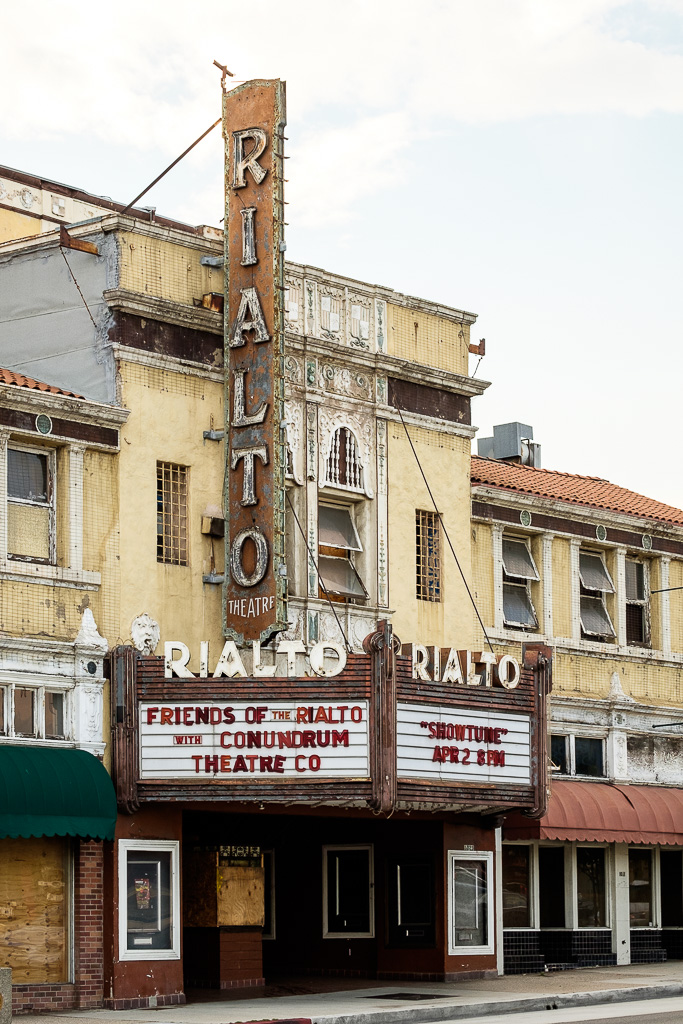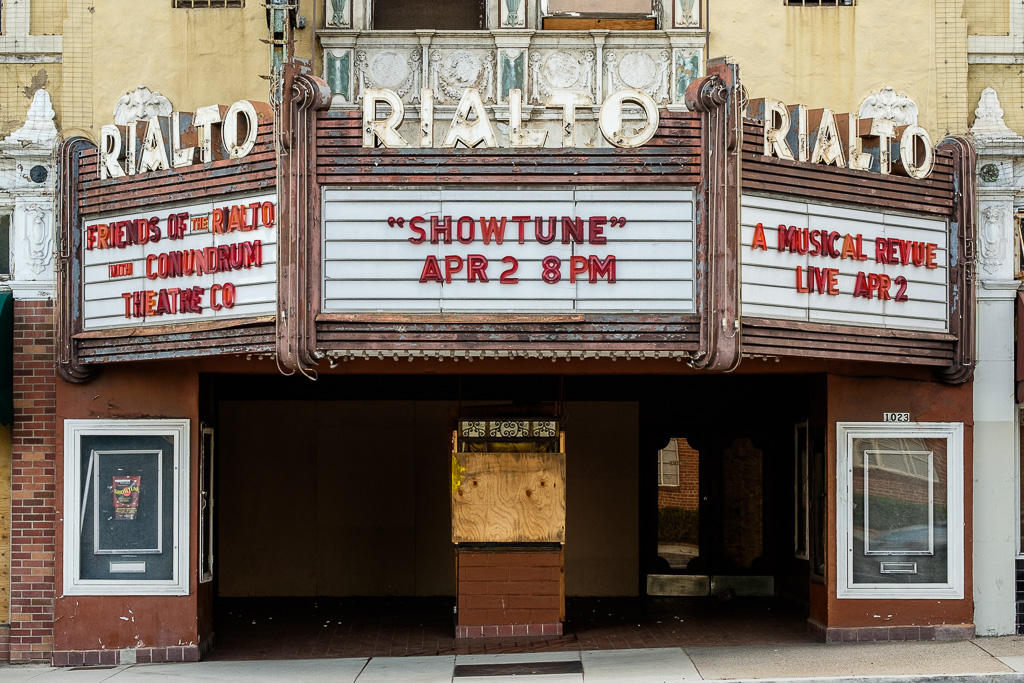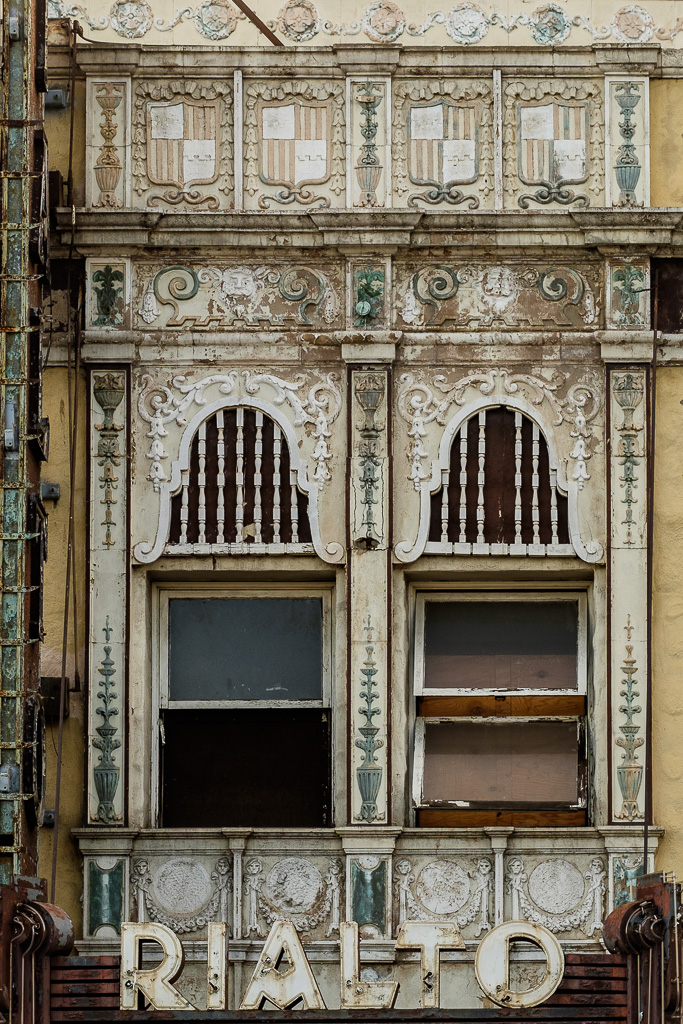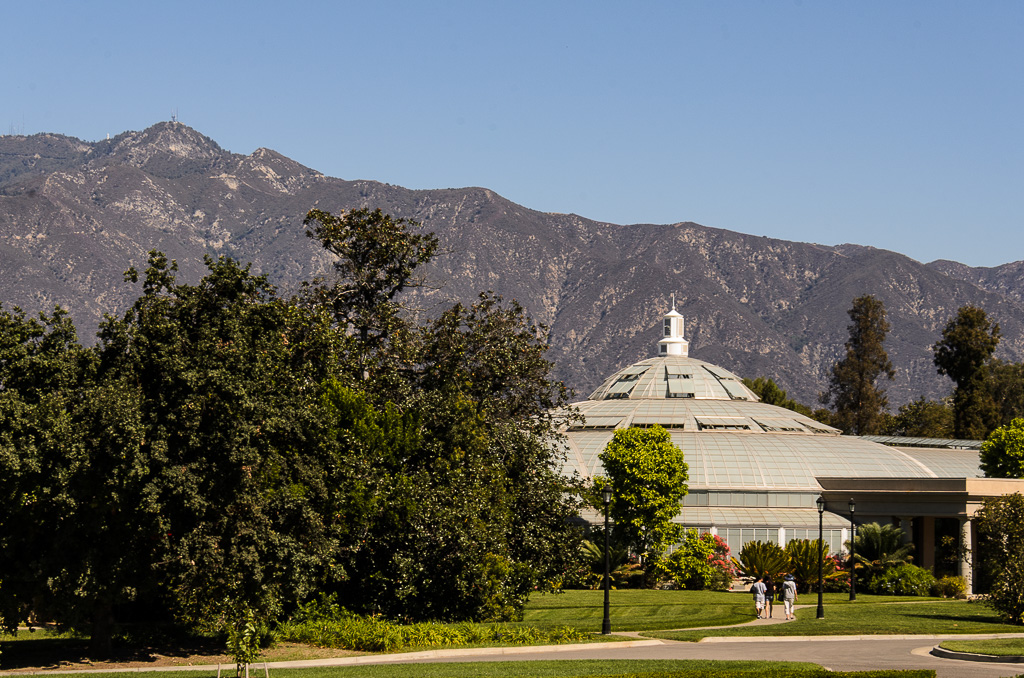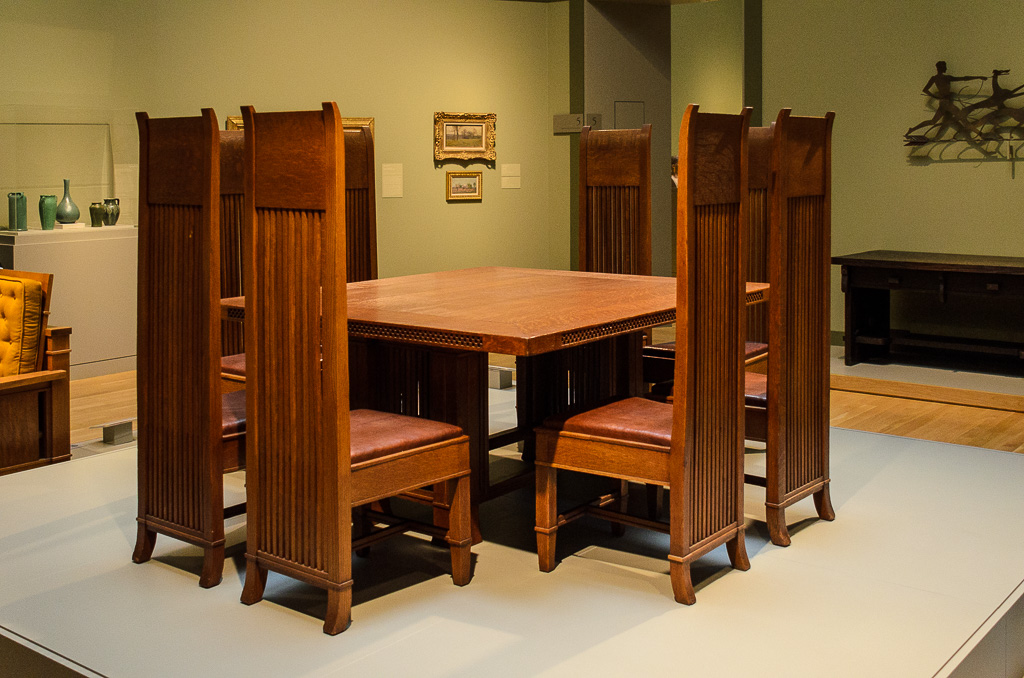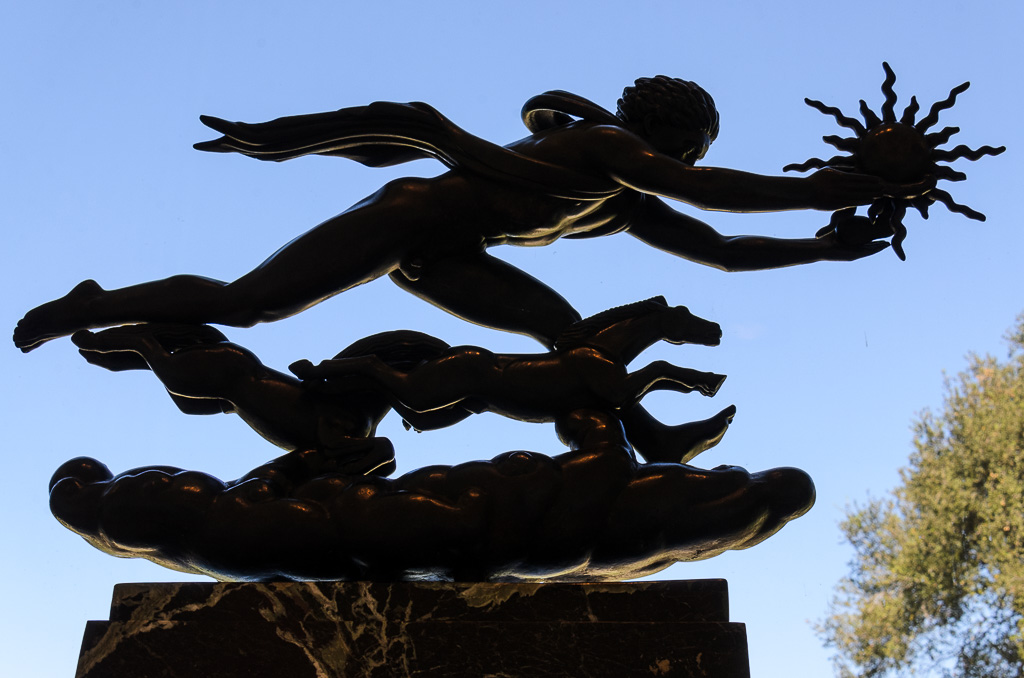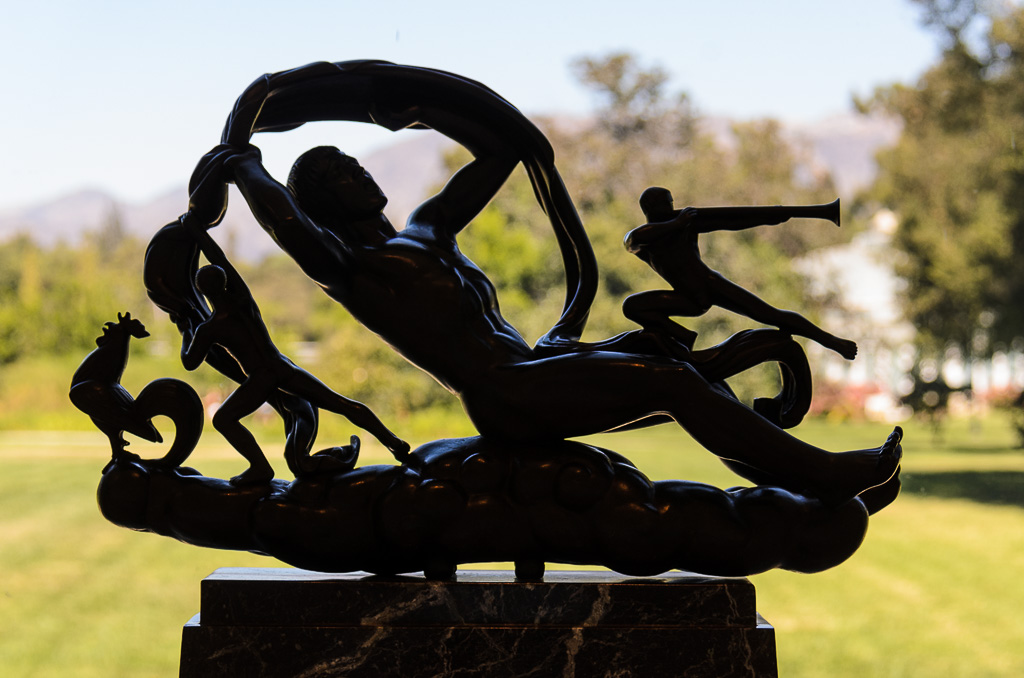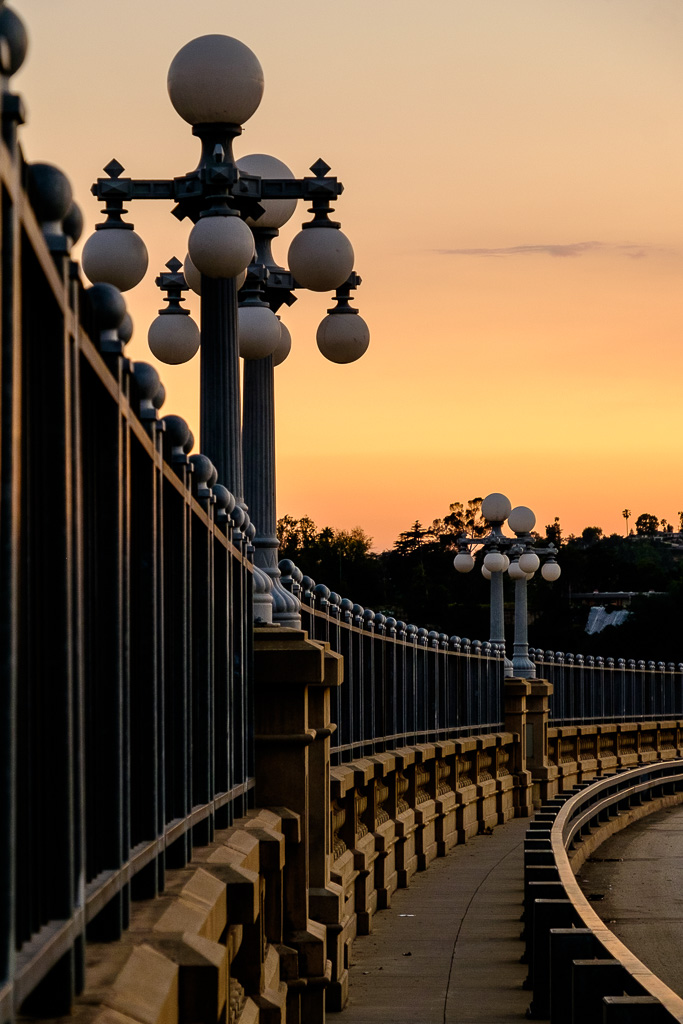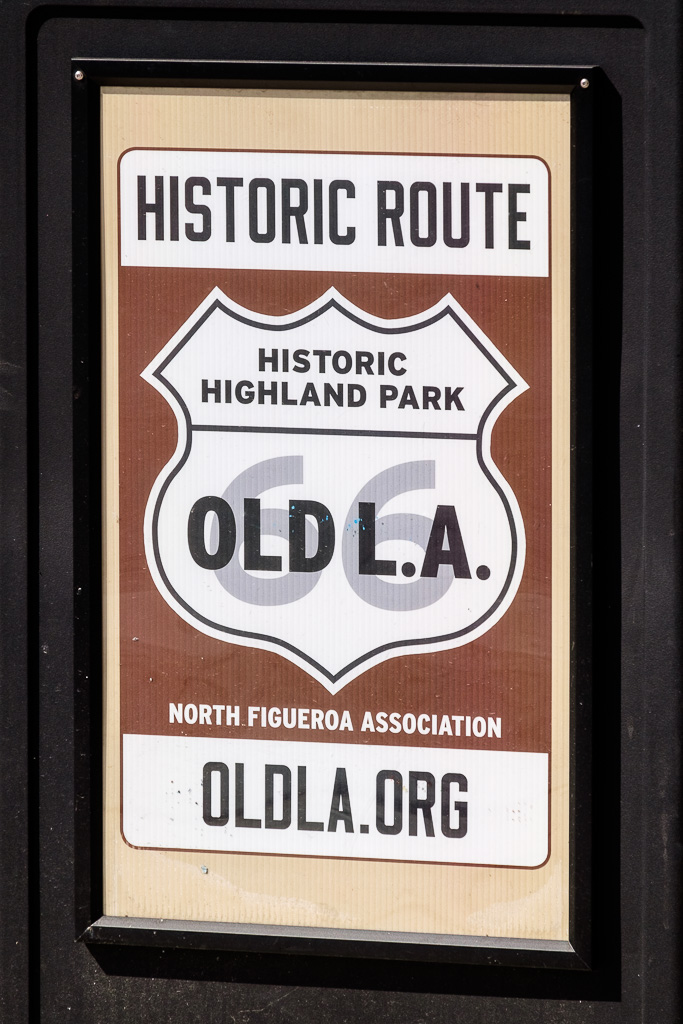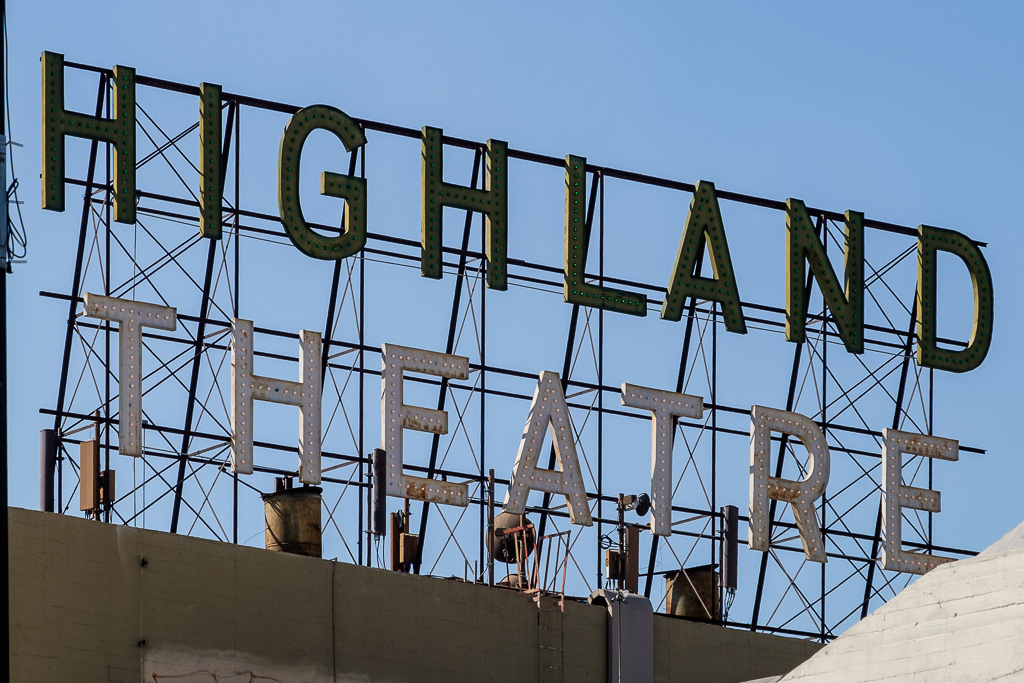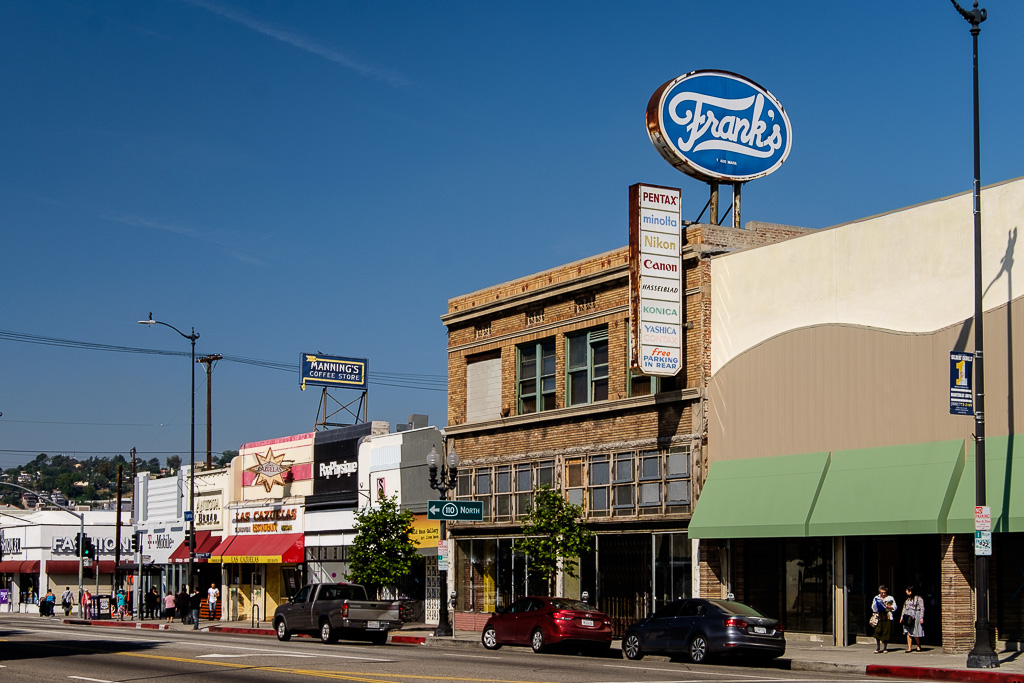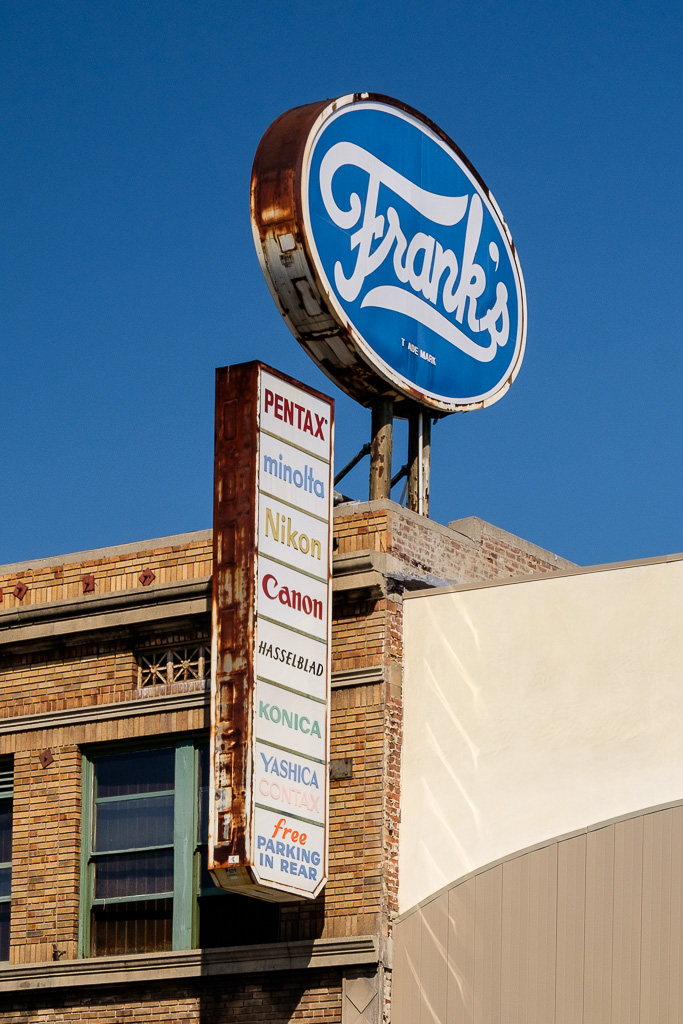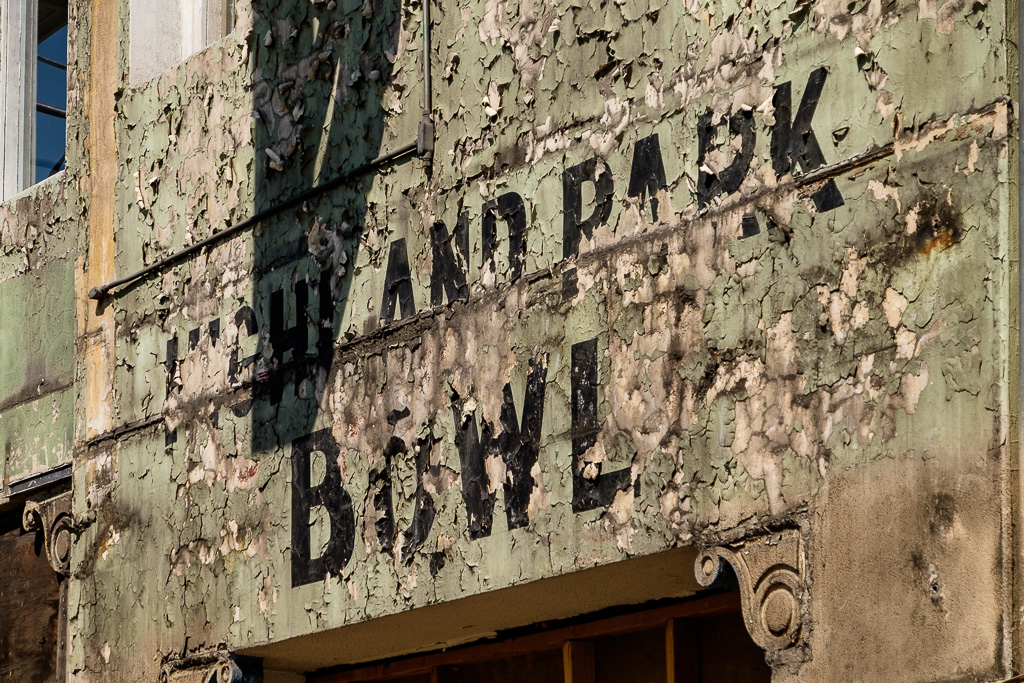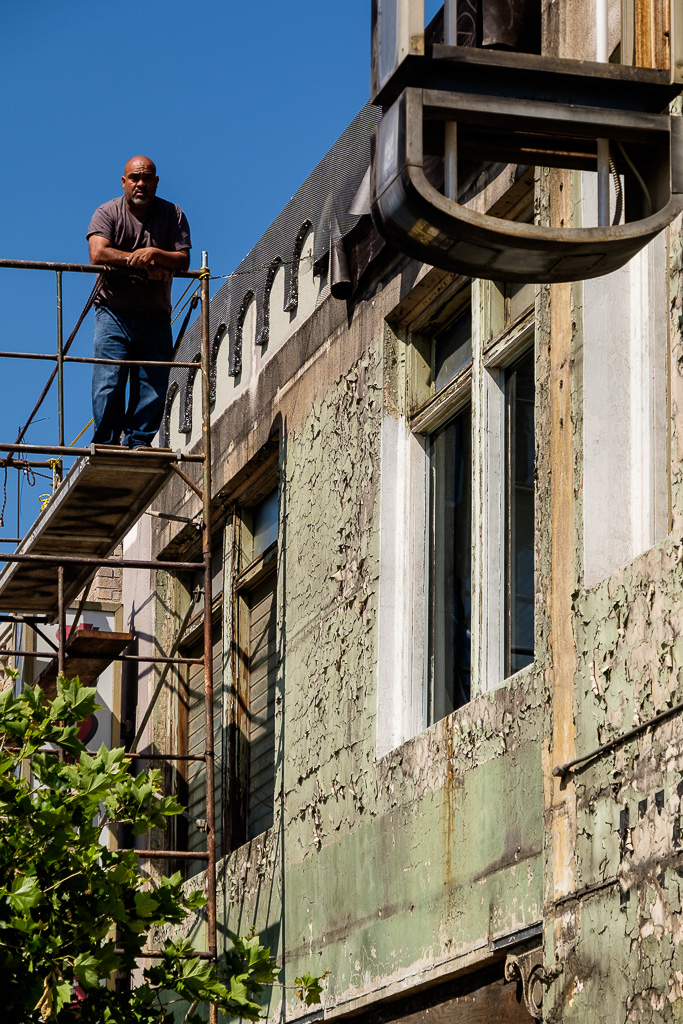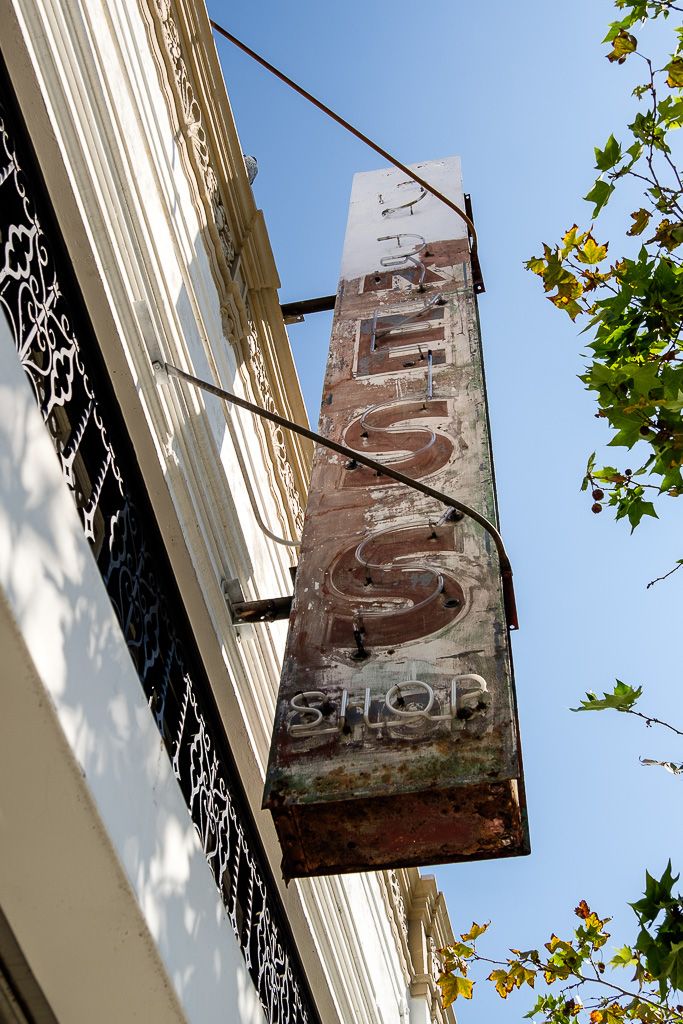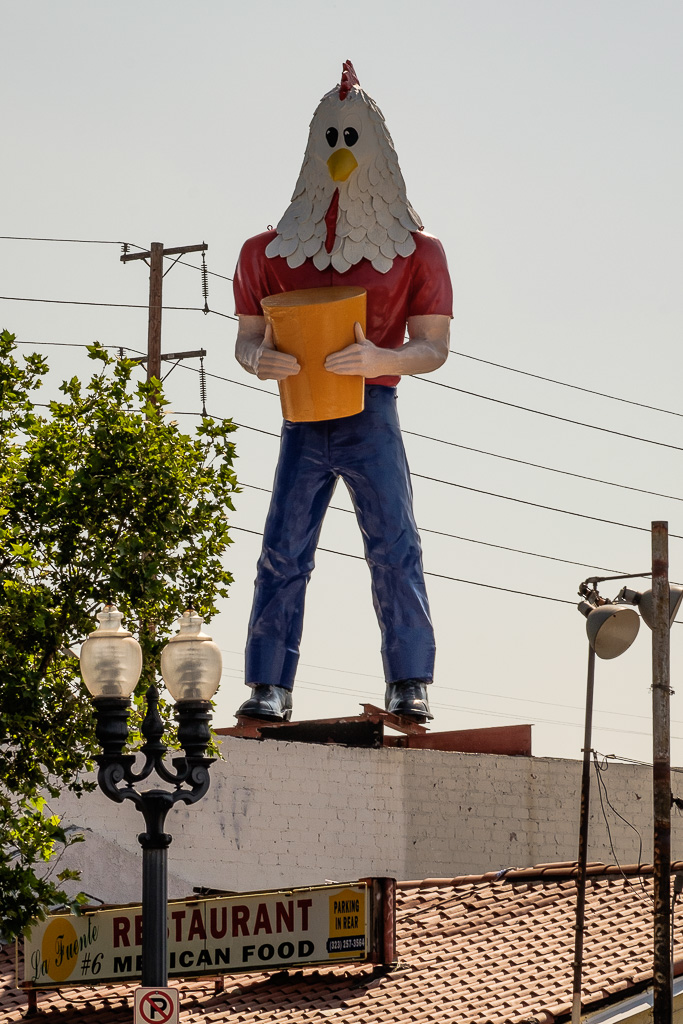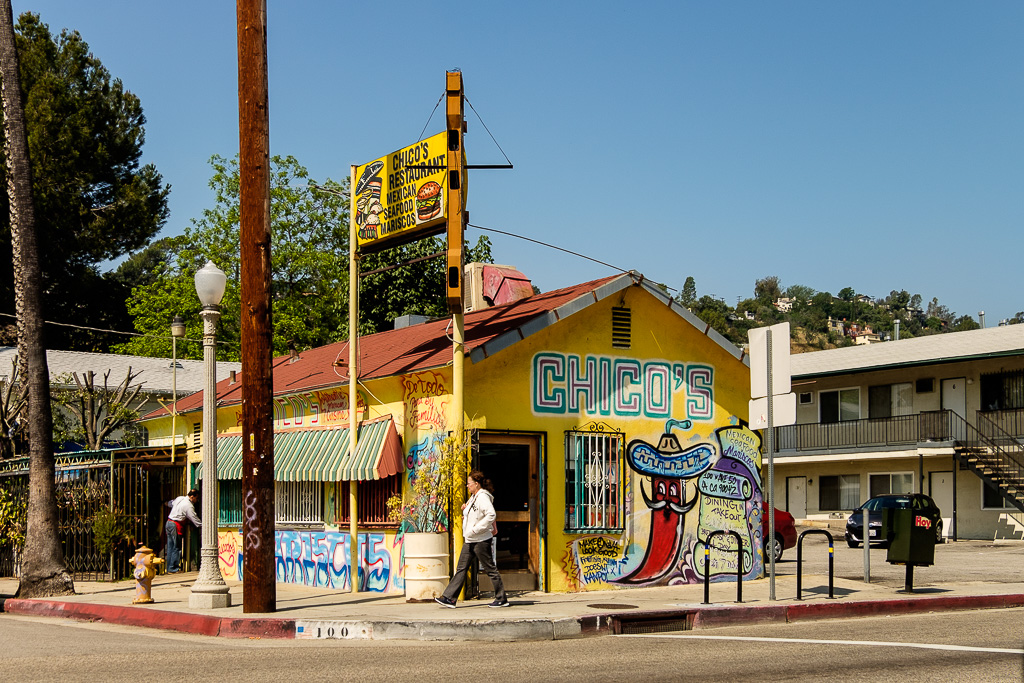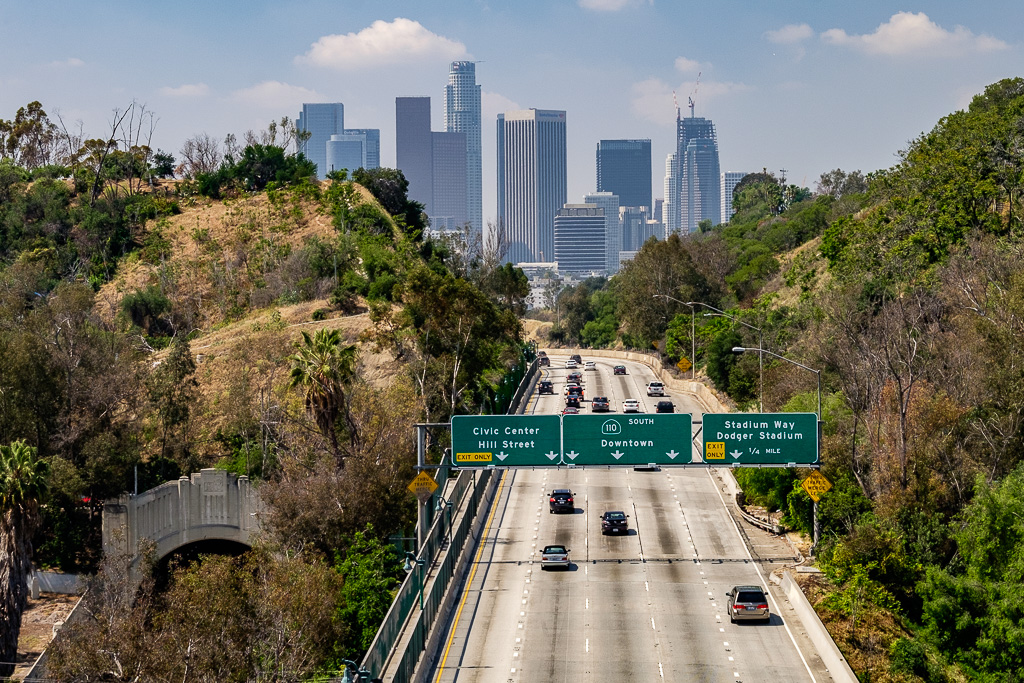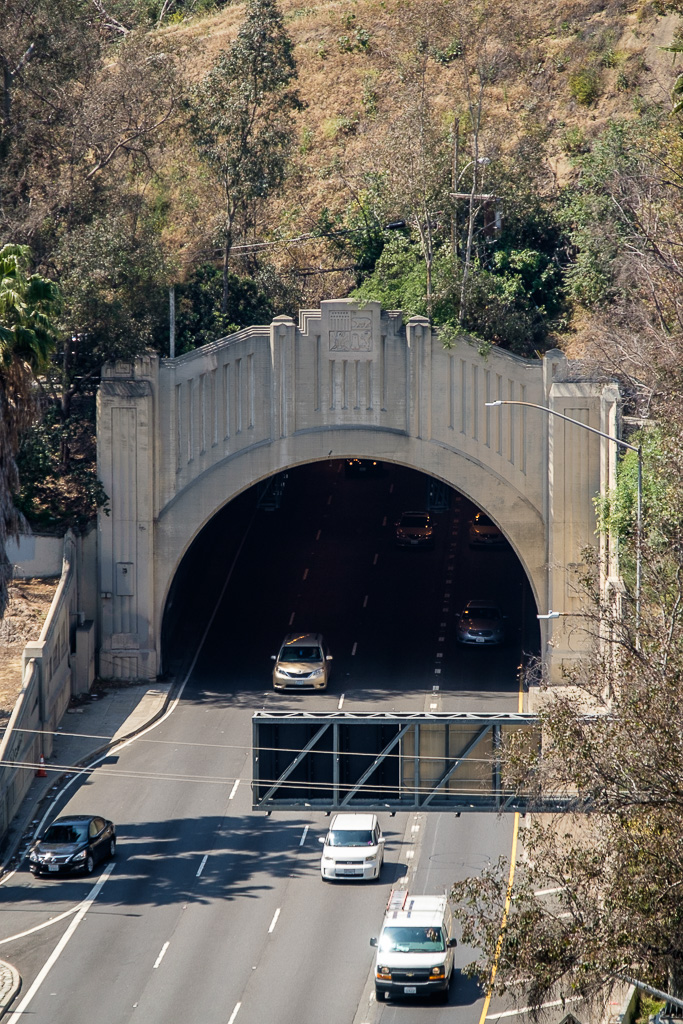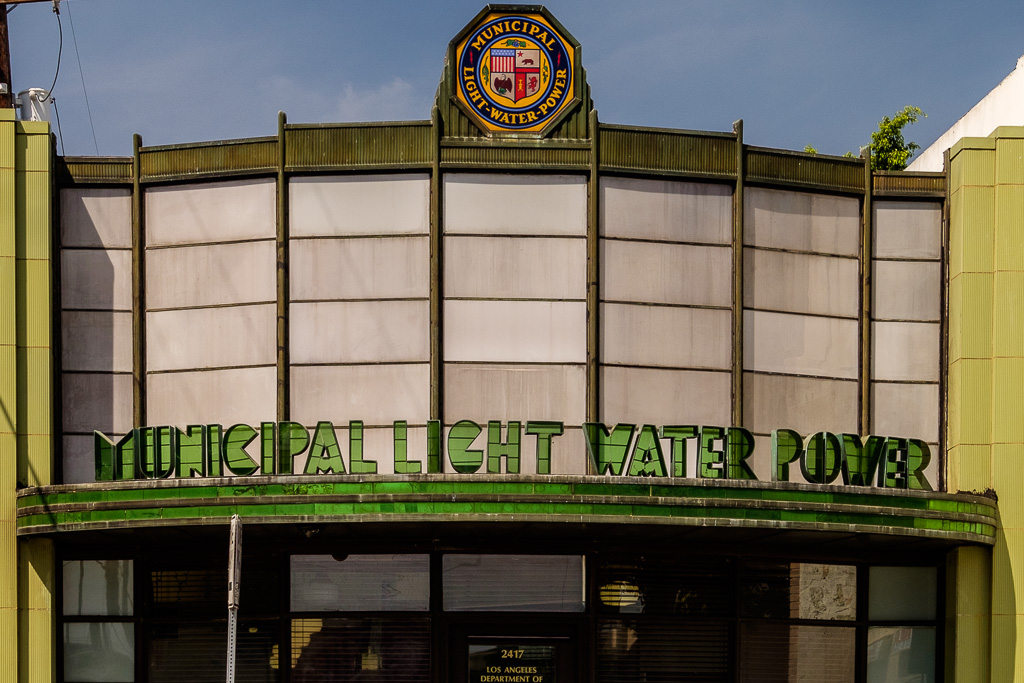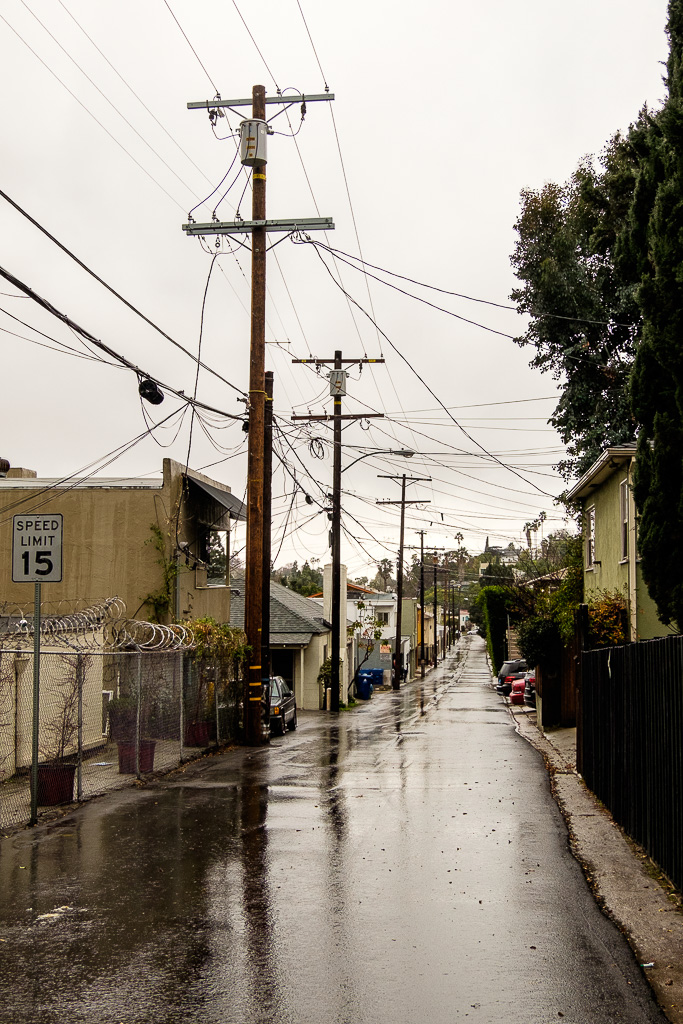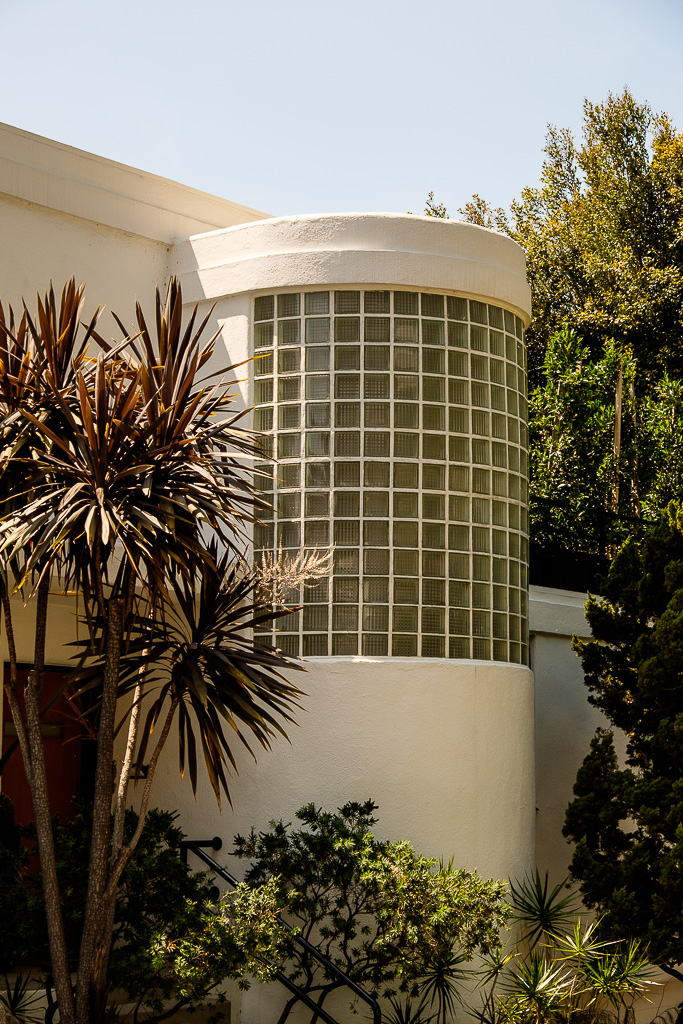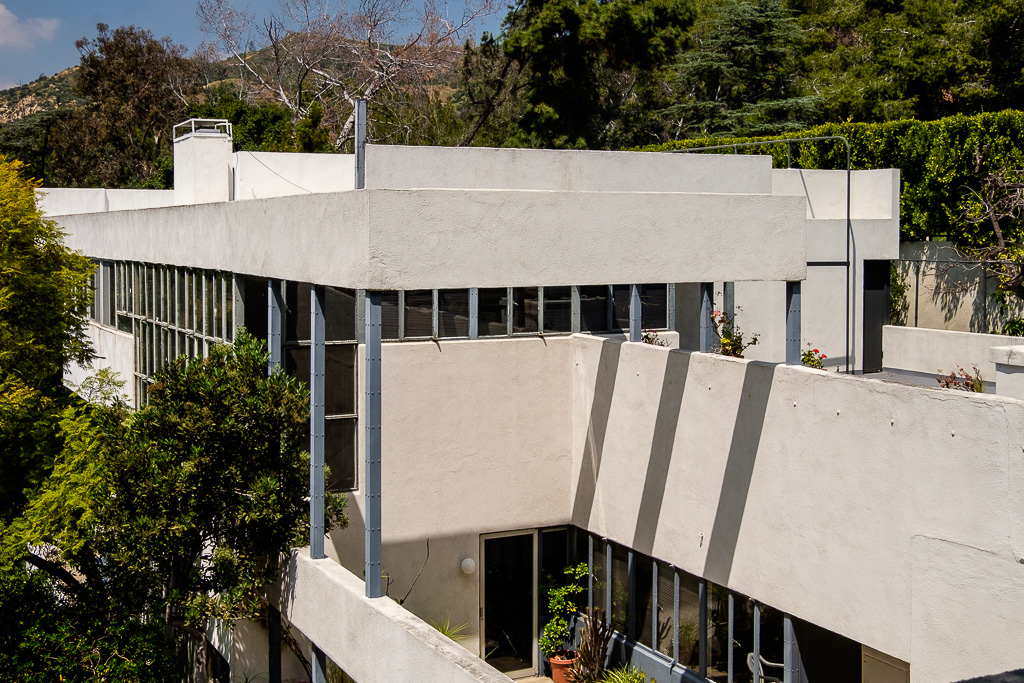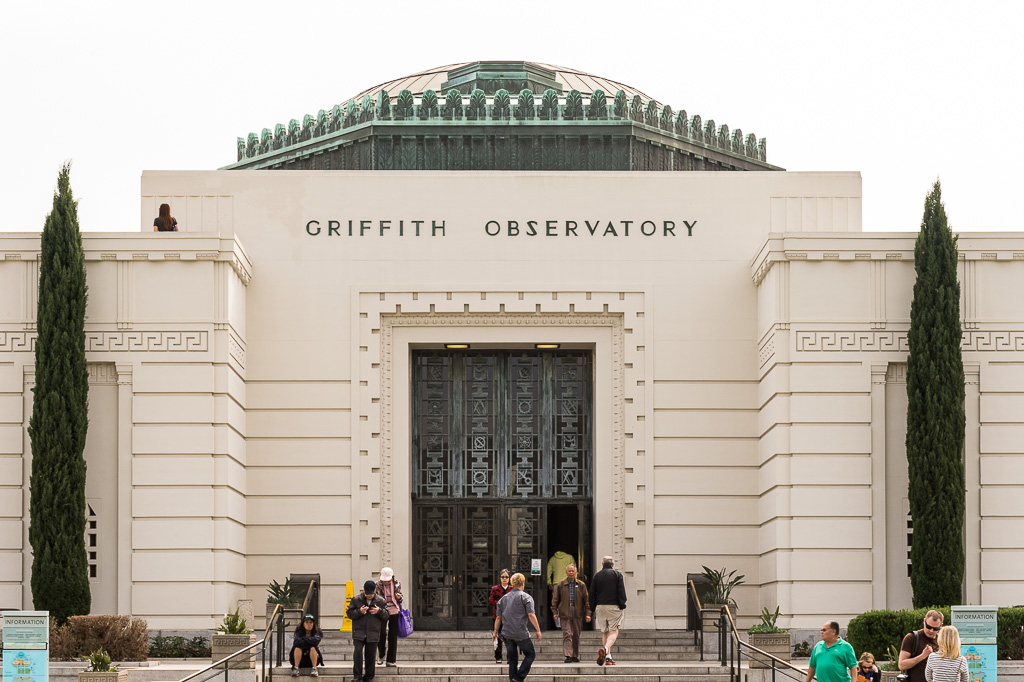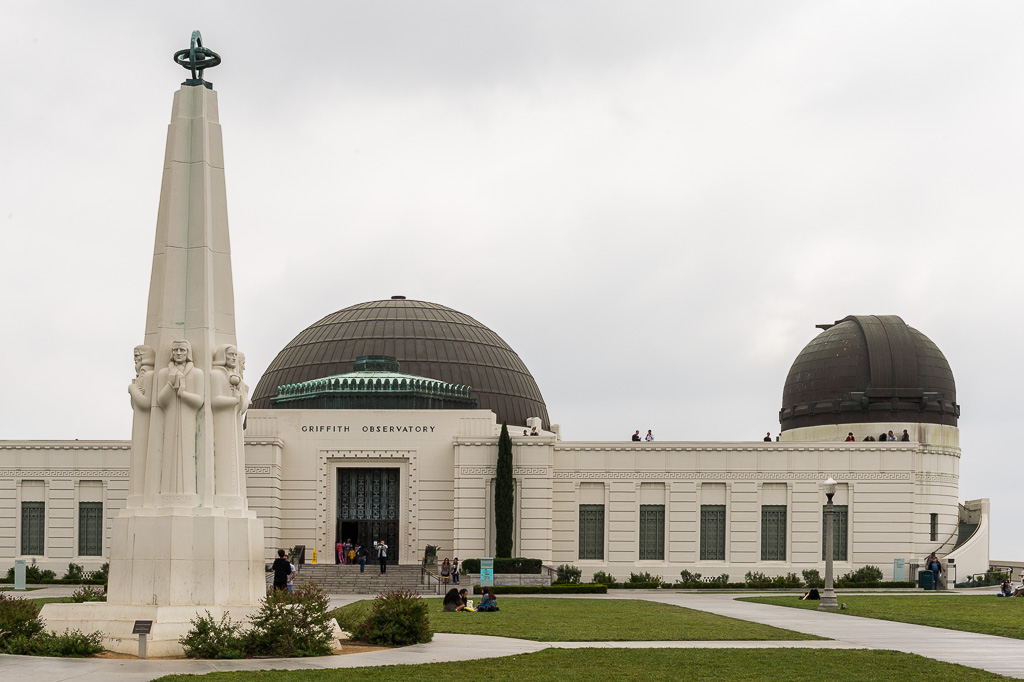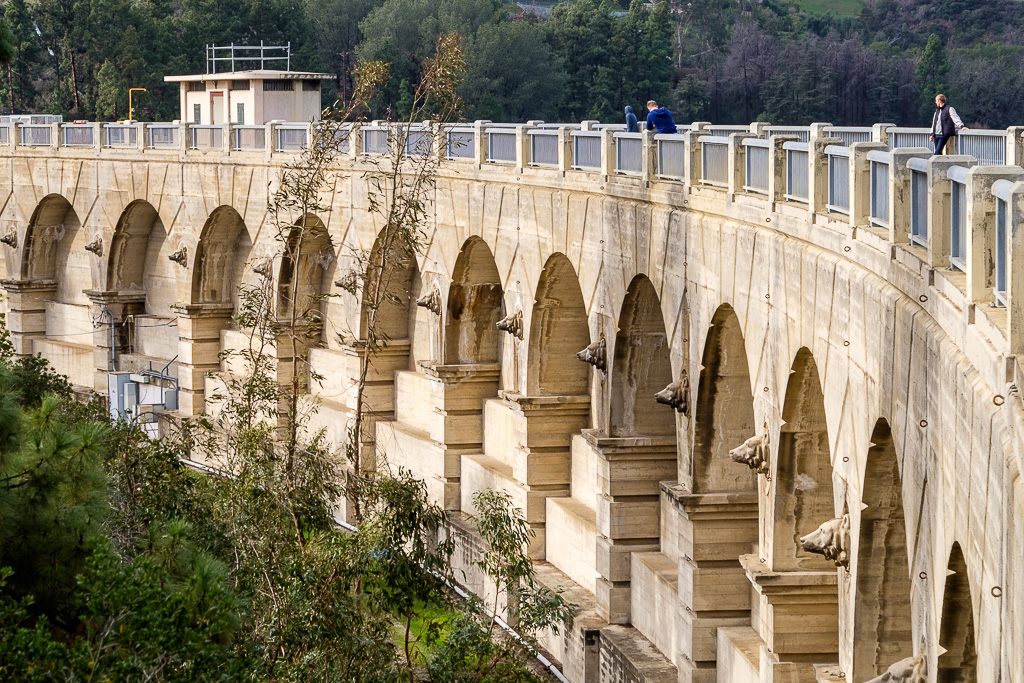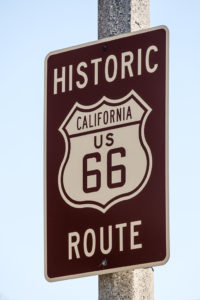 This post is mostly about architecture. Not just any architecture: we have some fine examples of the bungalows in the historic district in Pasadena called Bungalow Heaven (read more here) as well as some Greene & Greene masterpieces in Pasadena, including two of their “ultimate bungalows” – the Gamble House and the Blacker House; two Frank Lloyd Wrights (the Millard House in Pasadena and the Ennis House in Los Angeles); a Richard Neutra (the Lovell Health House also in L.A.); Pasadena City Hall, a California Mediterranean style beauty; some façade detail from the former United Artists theater in Pasadena (Berkeleyans – does this look familiar?) and much other art deco (both in Pasadena and later in L.A.). It’s one architectural treasure after another on this drive.
This post is mostly about architecture. Not just any architecture: we have some fine examples of the bungalows in the historic district in Pasadena called Bungalow Heaven (read more here) as well as some Greene & Greene masterpieces in Pasadena, including two of their “ultimate bungalows” – the Gamble House and the Blacker House; two Frank Lloyd Wrights (the Millard House in Pasadena and the Ennis House in Los Angeles); a Richard Neutra (the Lovell Health House also in L.A.); Pasadena City Hall, a California Mediterranean style beauty; some façade detail from the former United Artists theater in Pasadena (Berkeleyans – does this look familiar?) and much other art deco (both in Pasadena and later in L.A.). It’s one architectural treasure after another on this drive.
With a few exceptions this post is also about light: in April 2016 when most of these were taken, it was unusually wet and overcast, and I benefitted from some atypical southern California light and skies for a number of these pics.
Pasadena is a great visit. There is lots to do and see. In what is now called Old Pasadena there has been much main street revitalization. Trust me, I was there in the 70s and 80s, and it has come a long way. If architecture is your thing, Pasadena is a treasure chest. In addition to the arts and crafts bungalows there is some fine art deco in Pasadena, and I have included a few favorites in the set. How do you like those guardian sphinxes in front of the 1925 Scottish Rite Temple?
Just north of where Route 66 left Pasadena in the direction of Los Angeles (in various alignments) is the historic Rose Bowl (1922). When the first (American) football game was played there in 1923, the start of play was delayed an hour after Penn State’s team was stuck in traffic. A harbinger of things to come! Events during both the 1932 and 1984 L.A. Olympics were held there. See this timeline of events at “America’s Stadium”.
Route 66 entered Pasadena on East Colorado. It then left the city for L.A. on a few different alignments over the years. I have driven three alignments (all involving turning off Colorado and heading southwest). Remarkably, although the streetscapes may have changed dramatically, the various Route 66 alignments though L.A. remain almost completely intact.
One alignment to L.A. (and likely the best known) is the famous Arroyo Seco Parkway (a/k/a the Pasadena Freeway and Highway 110) – the first “freeway” in the western United States (opened in 1940). Read more here. Towards the end of this set one sees the freeway from the vantage point of scruffy and somewhat dodgy Elysian Park, looking down at the new and the old. The four original Figueroa Street Tunnels are still in use in the northeastern direction, and I have included a close-up of one of the deco tunnels. Dodger Stadium is nearby. It was light traffic for L.A. at the time of the day I took this shot. Very light. This stretch of road can get very, very busy. Also nearby is another deco beauty, the landmark green tile and glass 1937 LADWP “Municipal Light Water Power” building in Lincoln Heights.
Route 66 also once followed Fair Oaks Ave. and then Huntington Drive on its way from Pasadena to Los Angeles on what are called “surface streets” there. This was an early alignment (1926-31). The historic Rialto (1925) is on Route 66 in Fair Oaks in South Pasadena and in woeful condition. It is featured prominently in the movie La La Land. (Go here for some of the other La La Land filming locations – a few others are in this set.) As I write this, its future remains uncertain. It is one of the last single-screen theaters in left in southern California.
A little over a mile eastward from this Route 66 alignment (before hitting Huntington Dr.) one reaches the very impressive Huntington Library, Art Collections, and Botanical Gardens. A must-see. The four photos after the last Rialto photo are all from a visit to the Huntington. There is a photo of some Greene & Greene arts and crafts chairs in this grouping which are on display at the Huntington. (Note to readers of this post from the SF Bay Area familiar with the Greene & Greene William R. Thorsen House in Berkeley – that’s the dining room furniture from the Thorsen House.)
From the early 30s, Route 66 instead entered Los Angeles on Figueroa via the Highland Park area of Los Angeles. The bridge in this set is the Colorado Street Bridge (1913) – proclaimed the highest concrete bridge in the world upon completion in 1913. It was part of Route 66 on this other “surface street” alignment until the completion of the Arroyo Seco Parkway and re-alignment in 1940 to take travelers in (or out) on the new freeway.
The shot of the Highland Theatre sign and the 15 or so photos following it are all taken on Figueroa in Highland Park. After a long economic downturn this historic area is currently undergoing somewhat of a renaissance. Highland Park Bowl (1927) was still undergoing restoration the day I took these photos in April 2016. Read about it here – it has gotten a lot of good press. Read about Chicken Boy (a/k/a the Statue of Liberty of Los Angeles) and how it found its way to Highland Park here.
After a photo of a back alley in the very cool Silver Lake district of Los Angeles (a block off Route 66 where it follows Sunset Blvd. westward) we will continue on Sunset to L.A.’s lovely Los Feliz neighborhood and then make a small detour to Griffith Park. First, a sampling of the many Los Feliz architectural gems – a deco beauty, the Ulm House (1937), and then the Frank Lloyd Wright Ennis House (1924), and the Richard Neutra Lovell Health House (1929) already mentioned above – and then one of my personal favorites, the art deco Griffith Observatory (1935) on the slope of Mount Hollywood.
Finally, at the end of this set we will conclude our brief visit to Hollywood at the iconic Hollywood sign and our final art deco of the set, the Mulholland Dam (1924) and the Hollywood Bowl (1922), all in the Hollywood Hills.
There will be some more Hollywood in the last two Route 66 posts to follow soon.




